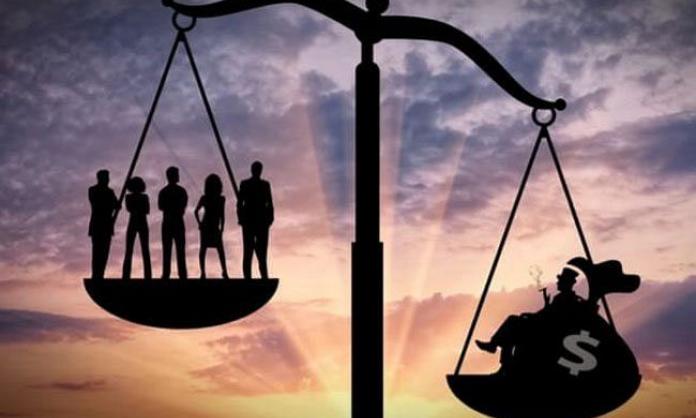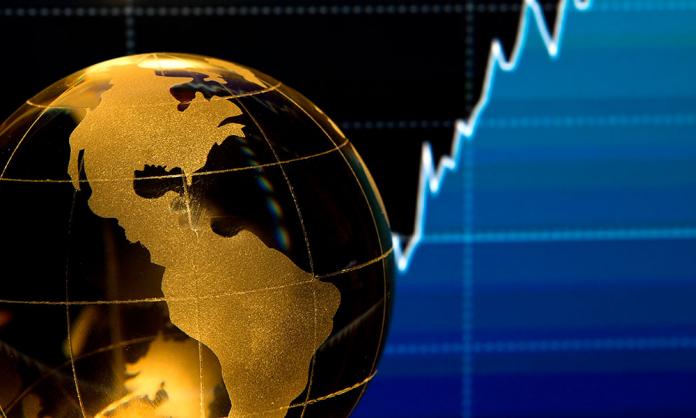Economic collapse and mass unemployment are leading to a global hunger crisis. It is generally referred to as a food crisis – but there is nothing wrong with the food, and there is more of it than ever. Yet every continent is setting records for queues at food banks and demand on charities. Outright desperation and starvation are on the rise.
The level of desperation was revealed recently in the UK when a furore erupted about a free meal program in schools. The scheme helped 1.3 million children not to go hungry in 2019, around 15 percent of all students in state schools. But that was before the pandemic and the economic collapse. A government-sponsored survey found that by May 2020, nearly one in six people had skipped meals or cut down meal sizes because they “did not have enough money to buy food”. This rose to 24 percent for households with a child, and 33 percent for those aged 16-24. The government planned to cancel the program’s extension over the school holidays. A public backlash forced a backdown, but the episode demonstrates that the struggle to eat is set to be a feature of the current crisis, even in the richest countries.
In the US, rising prices for some goods, especially meat, are compounding problems already faced by low income workers. The pandemic has wreaked havoc on workers in US abattoirs, who were provided no protection from the cramped conditions. DeLisa Booker, a 59-year-old retiree from Texas, told NBC News: “Meat is ridiculous. It’s like $8 for a pack of ground meat, and it’s harder to get what you need on a fixed income”.
Foodbank Australia has reported a 78 percent rise in people seeking help nationwide. In a range of middle income countries such as Brazil, India and South Africa – now with ballooning cases of coronavirus, mass unemployment and inadequate welfare systems – hunger is rising as incomes collapse. In countries already experiencing terrible levels of hunger and starvation, the catastrophe is escalating. Last year, 149 million people experienced crisis level hunger or worse. This year, the World Food Program predicts that number could rise to 270 million, and Oxfam says up to 12,000 people per day could die from starvation by the end of the year.
Sixty-five percent of those cases are in 10 countries or regions: Yemen, Democratic Republic of Congo, Afghanistan, Venezuela, the West African Sahel, Ethiopia, Sudan, South Sudan, Syria and Haiti. The list is a reminder that starvation is not the result of some natural disaster; it is brought on primarily by poverty, by warfare, by environmental crises and by the workings of the capitalist market.
--------------------
The United Nations Food and Agriculture Organization (FAO) does not agree with the predictions of impending disaster, arguing, “a COVID-19-induced global food crisis is not on the horizon. Indeed, while the world food economy was ill-prepared for the shocks that characterized the global food crisis in 2007/08 and the recession that followed in 2009, this cannot be said of the situation in 2020”. The organisation maintains that, despite some areas of concern, there is abundant and resilient food supply, and as long as markets operate freely and governments don’t disrupt trade, the situation will be under control.
It is true that globally there has never been so much food. The FAO reports that over the last year, harvests have been good and food stocks are at record highs. Cereal stocks, for example, stand at 850 million tonnes, twice what they were a decade ago. Global food prices have generally been falling in recent years, including for key staples. As governments and supermarkets keep assuring us, there is no real shortage of food or other household goods.
But virtually no famine in the modern era has occurred simply due to a genuine shortage of food. This was true of the Irish potato famine of the 1840s, when grain and other foodstuffs continued to be exported to Britain while a million starved to death and a million more were forced to emigrate. It was true of the horrific Bengal famine of 1943, when up to 3 million starved while the British colonial administrators blocked and diverted grain imports. It is true of Yemen today, where the Saudi regime has waged relentless war and bombing campaigns that have devastated the country, blocked imports and led to mass famine and outbreaks of disease.
In the current crisis, the key factor driving hunger is that people increasingly can’t afford to buy food. The global economic collapse is plunging hundreds of millions into unemployment. The International Labour Organization estimates that the equivalent of 305 million full time jobs have been lost globally. And with the jobs, working class incomes are evaporating. When so many, even in the richest countries, were already struggling to cover housing, medical, transport and food costs, it is easy to understand how a dramatic collapse in incomes will lead to rising hunger.
Government relief packages have poured trillions of dollars into the global economy. While this has kept the wolves from the door for many working class people, the schemes have been tilted towards big business. In the US, for example, most of the more than US$6 trillion announced for various schemes goes to business.
Sixty-one percent of the world’s population work in the informal economy, often with little or no protections like unemployment insurance, and often without access to any government welfare programs. The newly unemployed often were supporting not just themselves, but families and relatives. One result of mass unemployment is that the flow of remittances from migrant workers back to family members in their home countries will suffer. It is estimated that 800 million households globally were being supported in this way in 2019. More than one-third of Haiti’s gross domestic income comes from remittances, mostly from workers in the US. The World Bank has predicted that remittances could fall by 20 percent in 2020. Yemen has already suffered an 80 percent drop since January.
While people go hungry, Oxfam reports: “Eight of the biggest food and drink companies paid out over $18 billion to shareholders since January even as the pandemic was spreading across the globe – 10 times more than has been requested in the UN COVID-19 appeal to stop people going hungry”. Amazon’s revenues and market share have surged. In Australia, Woolies and Coles report revenues surpassing their usual Christmas highs. And let’s not forget that there are now 2,200 billionaires with a combined wealth greater than the poorest 4.6 billion people on the planet.
Contrary to the claims of the FAO, then, it is not the market that will prevent a food crisis; it is precisely because there is a market in food that people are going hungry or starving. Our access to food depends on our ability to buy it, and, for most people, our ability to buy it depends on our ability to work. Workers in the food industry collectively produce more than enough food for all of us, but production and distribution are not under their control and not undertaken with the goal of feeding people. Instead the control lies in the boardrooms of the major food conglomerates, and the goal is profit. That means the market in food can prove just as volatile as any other market.
The collapse of oil prices has hit hard in countries that are dependent on exports, many of which are food importers. For example, oil accounts for 84 percent of Venezuela’s merchandise exports, 96 percent of Angola’s and 94 percent of Nigeria’s. In South Sudan, it is 98 percent. The last has suffered rising prices, disrupted imports due to border closures, and the effects of climate change taking an increasing toll in recent years, with droughts, floods and now locust swarms ravaging parts of east Africa.
--------------------
Rising food prices and hunger were major factors driving the 2011 Arab Spring, in which revolutions spread across the Middle East and North Africa and inspired rebellion around the world. In this, they followed a well-worn tradition. From peasant revolts throughout history, to France in 1789 and Russia in 1917, hunger has often been the catalyst for riots and revolution.
It is too early to predict exactly how this will play out today. We don’t know how severe a coronavirus-related hunger crisis will get. Much depends on the severity of the economic crisis, how incomes and food affordability are affected by that and how governments react. Of course, starvation alone does not necessarily lead to rebellion, but given the multiple crises capitalism is facing, revolt is inevitable, and hunger will be a powerful motivator for many to confront the rich and powerful. As the old saying goes, “A hungry man is an angry man”.
In May, food riots broke out in working class suburbs in Chile, threatening to reignite the mass revolt against the right wing Piñera government. There have been protests and strikes in Zimbabwe in recent days as public sector workers demand wage rises to keep pace with rising prices. One placard at a protest read: “We are nurses. We are hungry. We need money”.
In Lebanon, already aflame with crisis and rebellion against the corrupt political establishment, the banks and rising inequality, there has been a resurgence of protests. “It’s no longer just about the demands of reform, of incremental change over time, it’s about fear of going hungry, basically”, Lebanese activist Gino Raidy told the Guardian. “You have a percentage of chance of going down and contracting coronavirus, but the percentage of risk of you dying of hunger or homelessness has become a lot bigger.” Lebanese prime minister Hassan Diab has admitted: “Many Lebanese have already stopped buying meat, fruits and vegetables, and may soon find it difficult to afford even bread”.








